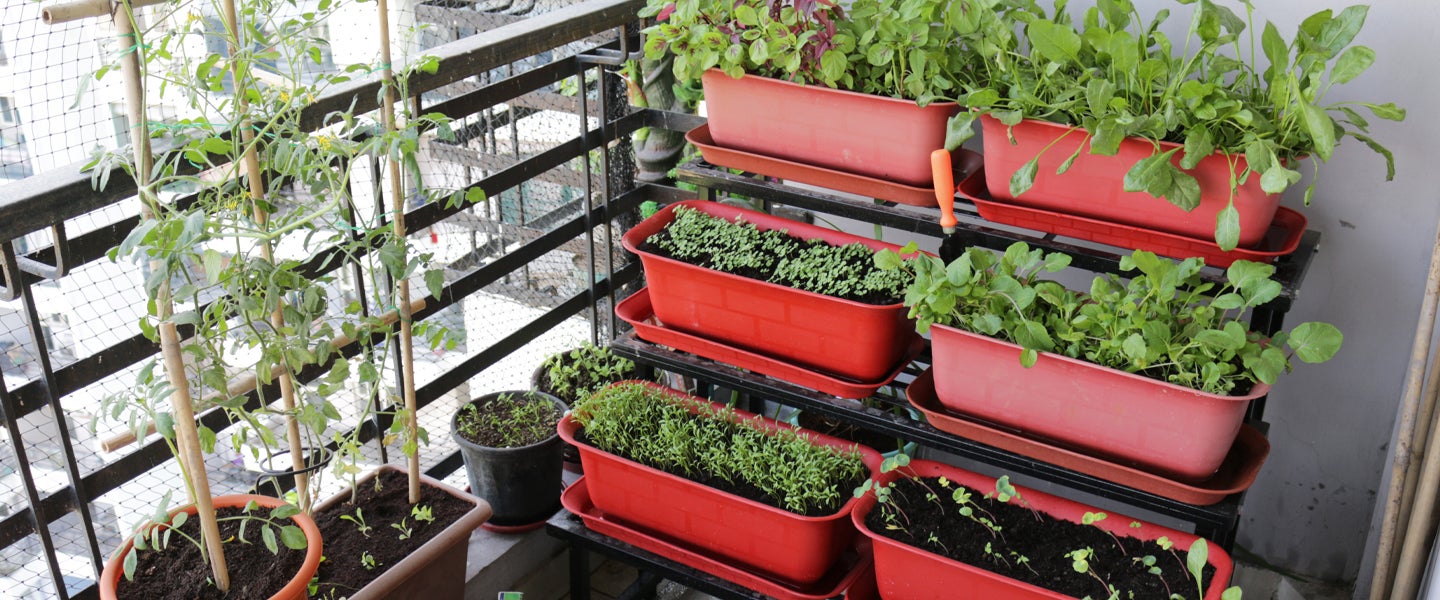Going to the grocery is already a nerve-racking experience thanks to food (and other stuff) hoarding, and whatever food is left seems to be getting more expensive all the time. Clearly, the best solution is for everyone to start their own farms to create their own sustainable source of — hmm? What? Oh, you don’t have several acres of land, because you live in a 5th-floor, one-bedroom apartment in the city? Well, there’s hope — and vegetables — for you yet.
You don’t even need to have a balcony or access to the roof to start sowing crops, so to speak (although those places do make better gardens if they’re available to you). But what to grow? Obviously, you’re not going to turn your living room into a field of golden wheat stalks, but there’s a shocking amount of vegetables you can cultivate indoors. I mean, check this list out:
- Potatoes
- Tomatoes
- Onions (green onions, too)
- Carrots
- Peppers (of both bell and chili varieties)
- Lettuce, Spinach, Kale and Arugula
- Garlic
- Veggies Kids Hate (Broccoli, Cauliflower, Beets and Radishes)
Of course, if you hate vegetables as much as kids traditionally do — or are a kid yourself, in which case, wow, I hoping you’re reading this under parental supervision — becoming an urban farmer might not seem worth it… until you hear about the fruit:
- Lemons
- Apricots
- Strawberries
- Grapes
- Figs
- Papayas
- Watermelon
Yes, you can grow a goddamned watermelon inside your apartment.
This might sound impossible, but it’s not — no more impossible than growing potatoes, lettuce or grapes. All that plants need to live and grow are sunlight, soil and water, and as long as you’ve been paying your utility bills, you should have water. Soil is abundantly available at lawn and gardening shops (if you do go to one of these during lockdown, don’t be a dick about it). Sunlight is technically free, but plants need a lot of it, and that can be tough in an apartment, depending on how many windows you have, where your apartment is positioned in relation to the sun and if any other buildings are blocking the light. Luckily, grow lights are easily purchased, usually reasonably priced and can provide plants the sunny goodness they crave when the actual sun isn’t cooperating with you.
Those are the plants’ basic needs, but you’re going to need a few more things if you want to convince them to hang out in your apartment all day. First and foremost are containers, but you can’t just grab a bucket, dump some dirt in it and call it a day. Most fruits and vegetables don’t like when things get too wet — they like things to be moist, not waterlogged, which means you’ll need to get a container where excess water can escape. This also means you’ll need a saucer under it to catch that excess water, too.
All of these plants need different amounts of sunlight, soil, watering and temperatures, so you need to do more intensive research before you stick a whole strawberry in the dirt and start dreaming of the daiquiris to come. Similarly, it’s probably good to know that salad-based stuff like lettuce and kale are easy to maintain and grow quickly, making them some of the most productive crops you can sow. Potatoes, carrots and onions take much longer to grow to full size, but all you need to have to start them is a hunk of potato with a few sprouts on it, or the root ends of onions and celery stalks (the parts you’d normally throw in the trash). Stick them in the ground, and they’ll get right to work.
Tomatoes and chili peppers could require a bit of help pollinating to get started (don’t worry, you can do it with a small paintbrush and a willingness to essentially help plants get it on). For the fruit trees, it’s much easier — not to say quicker — to purchase a young tree closest to produce-bearing age, as opposed to spending years tending to it before it starts rewarding your efforts.
There are benefits to growing your own food beyond the food itself. Every potato you grow is one less potato you have to buy at the store, which means one less reason to drive there, which reduces your carbon/coronavirus footprint. And every potato you thinly slice to make homemade chips is one less potato chip bag thrown into the trash heap. But maybe most importantly, unless you have a lot of maltodextrin, monosodium glutamates and diglycerides lying around that you’re planning to douse them with, your chips will be pristinely unprocessed and taste a whole lot better for it.

